The development of the legendary Fire Emblem series is handled by the talented staff at Intelligent Systems Co., Ltd. We are joined not only by Tohru Narihiro, a man with whom I’m sure fans of the franchise are intimately familiar by now, but other members of this first-class team as well. With a love for the series, the wherewithal to venture into uncharted territory, and a desire to cherish fans both old and new, they have created a wonderful new game that overflows with ambition. As always, our interviews are packed to the gills with good stuff, so please read every word!
Unmistakably Fire Emblem, Even in 3D
– I’d like to begin by asking Mr. Narihiro, who has been a major player throughout the Fire Emblem series, to tell us more about himself.
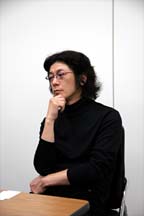
Tohru: I officially joined the team starting with Fire Emblem: Mystery of the Emblem1, and have basically been fulfilling the role of “unsung hero” the entire time. Computers weren’t as widespread back then, but there were also lots of interesting games coming out for home consoles. I wanted to help spread the word, and got involved with the franchise that way. At the time, simulation games were considered a much more hardcore, difficult, and involved experience–there are so many factors to account for, after all. It wasn’t possible to put that kind of experience on the Famicom as-is, so we needed limit the amount of information at play. It simply wouldn’t work unless we simplified things as much as possible. Our desire to make a streamlined, yet still fun experience led to the creation of a system that demands less of the player, which is why I believe the series has continued as long as it has.
1 Fire Emblem: Mystery of the Emblem - Released January 21st, 1994, it was the third installment in the Fire Emblem series and the first to be made for the Super Famicom
– I think its simplicity is one of the reasons it’s as fun as it is, though. Why is that?
Tohru: The thing about simulation games is that the more information there is on-screen, the more difficult it is to parse your situation. Even if each individual factor is simple, put them all together and the number of possibilities expands. But if you have many of those simple elements put together, it offers players a greater degree of freedom to play how they wish. For example, people who only want to use female characters, or play exclusively using archers. (laughs)
– You used to work on the Famicom Wars2 series of games as well, correct?
Tohru: Famicom Wars had unit growth and other RPG elements, but it was really just us laying the foundation for the original Fire Emblem3. Both series are followed closely by totally different players, and I think both groups enjoy playing them in different ways. Famicom Wars is closer to game like shogi or chess, where you move pieces around on a board. Fire Emblem is made to emphasize the personalities and growth of the characters, inspiring empathy in the players. The games are played with different end goals in mind. Fans of Famicom Wars would often ask if there was some way to give units more personality, which we tried doing in Advance Wars4.
2 Famicom Wars - Released for the Famicom on August 12th, 1988, it is considered the first in Nintendo's Wars series of games that also includes Advance Wars and Battalion Wars. 3 Fire Emblem: Shadow Dragon and the Blade of Light - Released April 20th, 1990, it launched the Fire Emblem franchise. It was remade twice, once for the Super Famicom (Mystery of the Emblem) and once for the Nintendo DS (Shadow Dragon). 4 Advance Wars - The first in the Wars series of games to be released outside of Japan, Advance Wars was released for the Game Boy Advance in North America to critical acclaim on September 10th, 2001.
– How about you, Ms. Kaneda? When did you join the Fire Emblem team?
Taeko: Fire Emblem: Thracia 7765. I provided assistance for previous titles, but have been a member of the main team for Fire Emblem: The Binding Blade6, Fire Emblem: The Blazing Sword7, and now Fire Emblem: Path of Radiance.
5 Fire Emblem: Thracia 776 - The fifth installment in the series, the final Fire Emblem game released for the Super Famicom, and the last game released at retail for the system (September 1st, 1999). 6 Fire Emblem: The Binding Blade - Released March 29th, 2002, this was sixth game in the series and the first for the Game Boy Advance. Its protagonist, Roy, was a playable character in Super Smash Bros. Melee for the Nintendo GameCube. 7 Fire Emblem: The Blazing Sword - The sixth Fire Emblem title and the first game in the series to leave Japan. It was released for the Game Boy Advance in North America on November 3rd, 2003, where it was simply titled Fire Emblem.
– Since the platform has switched to the Nintendo GameCube, I imagine there must have been lots of changes to make.
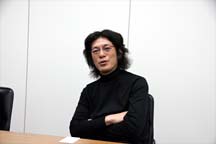
Tohru: We had the basic technology that we needed to implement 3D, but it was our first time handling realistic human models, so we had a lot we needed to learn on that front. We’ve been doing some basic experimentation with it for the past three years or so, though. You know, figuring out how things would change if what we’ve been doing in 2D were in 3D instead. We racked our brains thinking about what should be done with tricks that we used to be able to use should things like walls and stairs be rendered in 3D. Our biggest fear, however, was that our fans would reject characters simply because they’re 3D.
– Stuff like arrows passing through walls doesn’t actually happen, after all. It was something that was possible because it’s a game, and because it took place on a flat map.
Minoru: We tossed around ideas like having arrows get stuck in the walls, or having them destroy the wall and pierce through to the other side. We considered creating other destructive weapons like those, but ultimately decided against it.
Creating a Diverse Cast of Characters Means Paying Attention to Every Possible Parameter
– Ike is a bit of a departure from the kind of protagonist that we’re used to seeing in the series. We’ve gone from higher-class characters like princes and nobility to a young mercenary, which is quite the shift.
Taeko: You’re right. This is the first time a commoner has taken center stage. Which makes sense, given how the existence of “the prince of a lost kingdom” has been such a central part of previous titles. The settings do end up feeling kind of similar as a result, though. When making The Blazing Sword we decided to experiment by having three protagonists, and after collecting feedback following the game’s release we were amazed to discover how wildly popular Hector was. (laughs) Since Hector went over well, we thought it might be okay to go ahead and have our hero cut from a different cloth this time. This is also our debut on a brand new piece of hardware, so we wanted to leave all preconceived notions behind and take things in a brand new direction. After asking the staff for their opinions, there were lots of people clamoring for a protagonist that “even men could empathize with.” That’s how Ike was born.
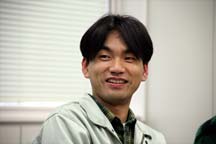
Masayuki: We decided to make him a guy who mostly keeps to himself, is more on the wild side, and has a rougher way of talking–that kind of thing. We even made him a mercenary in order to play up the manly aspect. Thanks to the spirited input of our male staff, however, this game’s Jeigan8 has been made into an attractive older woman. (laughs)
8 Jeigan - Each installment of the series has a powerful character that guides the protagonist through the earlier sections of the game. In the original Fire Emblem this character was an old man named Jeigan, whose name has been appropriated as a title that is applied to all characters in later games who fulfill that same role.
– I was surprised to see a different kind of Jeigan than what I was expecting, but I had no idea there were reasons like those at play behind the scenes. (laughs)
Masayuki: Our guys were giving very enthusiastic opinions about how “if someone is going to tag along, I’d rather it be a lady than an old dude,” and offering very specific details about what age range they thought would be good. (laughs) Her hair being a thick braid was done at Mr. Higuchi’s request, by the way.
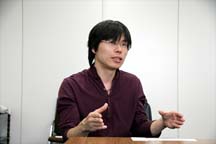
Masahiro: It’s important to make sure you can tell units apart at a glance. Plenty of characters have long hair, right? We needed to do something to set her apart from the crowd… the truth is that I just like neat haircuts, though. (laughs)
Taeko: When you’ve got over 50 characters in the cast, it’s important to make sure there’s enough variety there. Designing them so that they stand out as units is particularly difficult work. We’re trying to make sure that anyone who plays the game would be able to find a character they can get attached to, so we need to incorporate feedback from lots of different people. Since the beginning of the franchise, it seems like it’s been standard to ask male staff for opinions about female characters, and vice versa. (laughs)
– It’s quite the handful just trying to approach it the usual way. You need to give each character their own unique look and personality, after all.
Taeko: What really makes the characters of Fire Emblem so appealing is that each one really feels “alive.” Not just their appearance and personality, but their unit type, stats, and lines… they all come together to make the character who they are. We had to ensure that players would see their units as characters, as well. Since we’ve moved from 2D to 3D, we also used motion capture for movement in CGI cut-scenes and combat animations. If we think of the simple act of swinging a sword… make it too realistic and it’ll be almost unrecognizable as Fire Emblem, but if it’s too over-the-top it’ll seem almost disingenuous. We’ve been making adjustments the entire time, with our entire staff stressing out thinking about how best to strike that balance. I think it’s much better than it was at the beginning, but I wish we could have done something about the scenes that play out when somebody’s HP hits 0.
– It’s… pretty realistic, isn’t it? Distressingly so.
Taeko: Horrifying, right? (forced laugh) It used to be even more realistic. We tried to make it softer and that was still the best we could do. Relative to how deformed most other movements are, it may have been a bit too severe. We tried to make combat exhilarating by making the attacks flashy but the painful parts on the lighter side, though.
Tohru: There are two parameters called Weight and Durability, and these actually influence how characters move during combat scenes. If you take an interest in a character after seeing their portrait, try imagining what kind of fighting style they might use before going in-game and verifying it for yourself.
Taeko: Now that you mention it, the status screens for characters in The Binding Blade and The Blazing Sword had it so that any armor or other equipment would add to your total Weight stat, but that wasn’t actually explained anywhere in-game. Illustrations would show these dainty female characters who weighed incredible amounts in-game, causing some players to mistakenly think that they were secretly pretty chunky. (laughs) Because of that, we’ve decided to display a character’s weight and the load they carry separately in Path of Radiance. Keeping up appearances is important, after all.
The Trials and Tribulations of Making 3D Maps
Masahiro: The graphics were made almost entirely by Mr. Noda and myself, but we were stressed out the entire, thinking “maybe 2D is better after all,” and “what if this doesn’t go over well in 3D?” Since we had done everything in 2D up to this point, we were worried about whether or not making it 3D would make things more difficult to grasp. It looks strange if you try to turn units into icons by making their faces bigger, and it would be difficult to even recognize them as units if you don’t get their proportions just right, which is how we eventually arrived at how they look now. There was a point in time where I had thought I done a great job, but after showing it to the other staff I was on the receiving end of some pretty awful bashing. (laughs)
– Bashing? (laughs)
Masahiro: That’s right! Bashing!
Tohru: There must be a better way you can phrase that… (laughs)
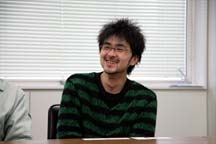
Minoru: Anyway, you can’t make it too realistic. People won’t recognize villagers’ houses if they lose that iconic element they used to have, and excessive realism would make it difficult to recognize your units as well. It was quite the ordeal.
Kentaro: We displayed the game at the “Nintendo World Touch! DS” event last year, but I was surprised to see how much the combat scenes had changed between then and when I saw them again during the debugging phase. The main request that we had on the Nintendo side was to make sure the game had a good tempo, and the game has been adjusted so that players can make good progress at a satisfactory pace. Players who tried the game at the event and were disappointed will probably be quite surprised to see how different it is now. I’m hoping everyone will give it a shot for themselves.
– When I played it, I thought the maps were all well-organized and quite easy to understand.
Minoru: We paid close attention to how things were laid out, down to each individual tree. We played up how tall they were at first, but that made it impossible to see units that were standing directly around it. We had the idea of making trees transparent so that you could see through to the other side, and for a variety of reasons we ended up deciding to have it as it is now.
– I imagine there must have been some problems that came up because you couldn’t see in those situations.
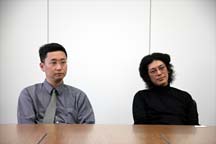
Minoru: There’s no way we could have possibly left it as-is, right? We can’t allow for the possibility of our players losing their desire to continue the game because something happened without their knowledge. It was for that same reason that we took painstaking measures to ensure that all two-story buildings were reduced to a single floor, and that the sails were transparent on maps that took place on ships.
Tohru: He would also make us such wonderful maps. We would always take those maps, think “Oh, gosh, what a nice map. Too bad we can’t use it,” and then throw them away. (laughs)
Minoru: I want players to enjoy the overall atmosphere and flow of the maps. There are many maps with different climate effects as well, like snowstorms or heavy rain.
Kentaro: We’ve also changed the sizes of the maps themselves, prioritizing making them easier for the player to enjoy.
Tohru: We don’t want to make any compromises with the gameplay. We want everyone to enjoy their experience, and we don’t want anyone to feel inconvenienced by the game. The series is all about maintaining a certain level of tension while you play, and we cannot yield on that front. I think players will feel right at home once they jump in.
– Tell me more about this new unit, the “Laguz.”
Taeko: The first design we had was basically your garden-variety “beastman.” It looked pretty good, and we thought it might be popular with new users… but that it wouldn’t fit very well in the Fire Emblem universe without some tweaks. We thought it might be an easier sell if made so that they shape-shift during combat sequences, like the Mamkute characters that were part of the series already. It wouldn’t be interesting if we took the safe route and just made them a beast version of Mamkutes, and we wanted them to be able to fulfill their own role as pieces on the board, so we did some brainstorming and decided what traits Laguz units would have. In a world-building sense, what really separates them apart from Mamkutes is that their “human” form is their default state of being. Even if their evolved form is different, Laguz are actually quite similar to Beorcs. The differences between individual tribes might be easiest to understand if you think of them in the same you way you think of the differences between different ethnic groups and cultures in the real world.
Making Effective Use of the Your New “Base”
– The “Base” is quite a large addition to the game. It’s from your base that you can visit shops or advance the plot, but why did you decide to split it up like you did?
Masayuki: What we basically did was take everything that wasn’t combat and place it outside of the map. We wanted to separate the two completely, and have people enjoy the gameplay purely for the gameplay. It may not necessarily be the perfect solution, but we figured that we wouldn’t know until we tried. I personally prefer having stuff like this happen outside of the map – I like to enjoy the simulation aspects of the game in their purest form.
– Support Conversations happen in the base now as well. I know everyone is looking forward to those.
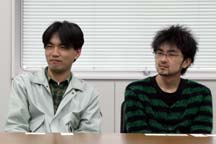
Masayuki: There were lots of conversations that we figured had no reason to take place on the battlefield. It’s also possible that you might pick the wrong option and start a Support Conversation by mistake. It can be fun to place two units next to each other and make up your own story for them as you go, though. (laughs)
Taeko: Supports show a scene where a private conversation is happening between two characters, with the “source” of that being the protagonist, Ike himself. There are some parts that show him casually listening in, though. (laughs) I feel like this might make it a bit easier to identify with him.
– Please tell me more about why you cut the Arena, and about “Bonus EXP”.
Masayuki: I know that people were quite fond of the Arena, but I felt like it was getting too much attention. It was a place where players could fine-tune the strength of their units to their liking, but that led to instances of players using characters far beyond the level we wanted them to play at. We also worried that most of the time people spent with the game ended up going towards that, as well.
Taeko: We didn’t want to create an RPG-like experience where people would only be able to clear the game because they put a lot of time into raising strong units. We want people to play by skillfully using the pieces they have available to them under the constraints of specific limitations. The simplicity of the handheld versions was fine, but since we’re having players take the time to sit in front of their TV anyway, we want them to immerse themselves in the simulation aspects of the Fire Emblem series.
Masayuki: You can access “Info” conversations from your base that will help you formulate strategies, so I’d like players to take a look at those. We have separate groups of users who want to enjoy the series purely for the simulation aspects, and others who like to play it as an RPG, and we’ve done our best to try and satisfy both. Incidentally, you should keep an eye on how many stars (☆) are listed next to each conversation. One-star conversations yield new information about characters, two stars for strategic information, and three stars for conversations that get you things like items or new characters
– How is Bonus EXP? Both it, and the system of inheriting skills by equipping them, seem pretty ground-breaking to me.
 Kentaro: Some units are tougher to raise than others, right? Units that use staves are important, but it’s also difficult to have them keep up, which makes them harder to use. We introduced Bonus EXP in order to help balance that.
Kentaro: Some units are tougher to raise than others, right? Units that use staves are important, but it’s also difficult to have them keep up, which makes them harder to use. We introduced Bonus EXP in order to help balance that.
Masayuki: Skills are great for bringing out a little bit more of a character’s personality, but I think longtime fans of the series will also find them quite nostalgic.
Masayuki: Oh, also: If you try to raise a unit exclusively on Bonus EXP, their skill with weapons will never go up. For that, you should use Crafting to make yourself a strong weapon that can be used even with low weapon skill.
– Are there any other changes worth mentioning?
Masayuki: Enemies should be pretty clever this time around. We had reduced the number of thought processes for AI in the Game Boy Advance games quite a bit, so they would sometimes make things tough by constantly healing themselves and stuff like that.
Taeko: When making the Game Boy Advance games we had kept the nature of the hardware in mind and made it so that most situations would basically work themselves out if you used brute force. We also omitted several powerful mechanics, like mounted units being able to move again after attacking, or skills activating multiple times. Now that all those mechanics are back for the GameCube, you’re going to need to stay on your toes if you want to succeed–even on the normal difficulty setting.
Delving Deeper Into the World of Fire Emblem Through Beautiful CGI Movies
– I feel like the tutorials get better and easier to understand with each installment of the series.
Kentaro: We made sure that players would receive a “Yes / No” prompt before each tutorial, as well as making sure that they could skip at any time or go back and look at them again in case they missed anything. Or, for a new mechanic that doesn’t necessarily warrant its own tutorial, we made it so that a notice will pop up in the bottom-left corner of the screen. I love those–they’re like those tickers they use for news flashes. (laughs) If something is particularly important one of the characters will take the time to tell you about it, so you should be able to handle most situations just pushing forward as you like.
– Why did you decide to create three separate difficulty settings?
Taeko: One of the requests we got from Nintendo was to make it so that 80% of the people who play the game will be able to finish it, so we decided to split it up into different difficulty levels. There’s a pretty significant gap between the players looking for a challenge and the people for whom Path of Radiance will be their first Fire Emblem game, after all. Even though we’ve got three separate modes now, I hope we’ll be able to satisfy as many players as possible.
– What’s the theme for Path of Radiance?
Taeko: Looking back on it, I want to say the idea of “the love between parent and child” stuck out the most to me. Families come in all shapes and sizes, and so do the ways they show affection for each other. If you turn on the news, all you see lately is tragedy. Families form the foundation of all human relationships, and in Path of Radiance we put very raw emotion on display–the kind that can be expressed precisely because the characters are faced with the life or death situations that war presents.
– Could I get some final comments to close things out?
Minoru: Interacting with enemies is realistic to the point of being scary. I hope our players will enjoy the new sense of realism that the jump to 3D has created.
Masayuki: It may be in 3D, but it’s still the Fire Emblem you know and love, so please enjoy.
Masahiro: Despite moving to 3D, this game has ended up being a very stress-free work. We made sure to lock the experience at 60 frames per second, and I hope our players will enjoy the ease of control that provides.
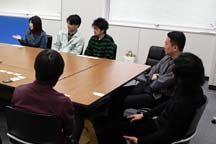
Taeko: We were able to make spectacular use of the talents of each person on staff. I’ll be overjoyed if people enjoy it.
Kentaro: The music is fully orchestrated this time, and the result is brilliant. I’m confident that players will feel that this game is well worth the price of entry. Start your adventure on Normal Mode, and aim for the emotional endings that awaits!
Tohru: The CGI movies in the game were created by Digital Frontier, and they did a marvelous job. Introducing movies into the Fire Emblem formula was a challenge, and making them fit depends entirely now well the creators put them together. All these parts–movies, maps, and illustrations–ending up as well as they did is largely thanks to our fortuitous encounter with Digital Frontier. I hope that these movies will allow players to invest themselves even further into the drama of the Fire Emblem world.
– Thank you very much!
———